|
We've all been there. You're about halfway through the first draft of your current novel. Or maybe you've even finished the rough draft and you're sitting down to revise and you're just... a little lost. You're not sure what to tackle first and you're not even sure who your characters really are.
Maybe this isn't as much of an issue for the Plotters out there, but for us Plantser/Pantser set, it can be a little more challenging when trying to tame an unruly first draft or whip a second draft into shape. Here is one tried and true strategy that I've leaned on in the past, and has helped tremendously in rekindling inspiration, or just better understanding who I've created on the page. What is a non-canon scene? It's a scene that has nothing to do with your plot. You know, the kind of scenes you end up trimming from a first draft during revision or editing. Sure, you like it. Hell, maybe you even LOVE it, but it doesn't fit in with the current theme or arc of the story and you trimmed it. You gently, but decisively decided to copy/edit/pasted it into a separate word document and it lives there now, forever in your memory as a beloved treasure meant only for you and maybe your beta readers, never to see the actual light of day. If you don't already have one of those scenes, then it's your lucky day my friends, because it's time to WRITE THAT SCENE. I dashed one of those off because the idea and the imagery arrived fully in my brain one day and it would not let me go. It didn't work with the story structure at the time, but I wanted to get to know one character in particular, a little bit better, so I cracked my knuckles and hammered it out. And now it's chapter 2 of Metal Heart. It felt like, at the time, it had literally nothing to do with the story and it was pure fan-service for myself. And then I was like, OK, but I like this character interaction. For some time, it lived in a different section of the book and now it's chapter 2 and it does everything I've asked of it. And I didn't even know at the time that I needed it for the story. I just knew I needed to write it. And once it was typed out, I l fell in love and was like... "this needs to go somewhere." It inspired me to find a home for it in the book, but most of all, to keep WRITING the rest of the book so it had a place to live and flourish. Why should you write a non-canon scene? First of all, because it's fun. What's better than no-pressure, zero-expectation, responsibility free writing? What's better than a scene with characters that you already love, doing something wild or inane, that has no actual bearing on or consequences for the rest of your story? I promise you, you're not going to break the back of your book with this scene. There's nothing riding on this moment. It's just for you and the characters. You're taking a little breather. You're trying something new and invigorating. In essence, it's a bit like writing a little fanfiction of your own book. And who doesn't love fanfiction? It will put you in a different mindset or mood. It will let you be creative, and still live in the world of your story, with the people who populate it, without feeling like you're going to mess everything up if you write the wrong words or have them do the wrong things. It's the writer equivalent of a sandbox, where you can build a beautiful castle and "destroy it" without worrying about the effects it has on the structure of the story, or the canon progression of the characters. How to write a non-canon scene. The two biggest tips here are to pick either some outrageous scenario like fighting a dragon or something super mundane like cooking a dinner together. You could also have them do something canonically in-world, but still not story-canon. For my non-canon scene, I chose an activity that I imagine Eleni Garza would have done on an annual basis. I didn't even know that Rabbit Santiago would interrupt her until he showed up and then I was like, "of course he would." He would also be the kind of guy who would go to confession or to pray on a quiet Tuesday because he was guilted into it by his mom. You want to keep some of your character quirks and motivations. The point isn't to write them so completely off-base or off-character that you don't recognize them. The idea is to place them in a different scenario, completely different to the scene or plot hole you're stuck in, and let them do their thing. Be creative and write. I promise it's a whole hell of a lot easier when you take away the anxiety of thinking that it will one day be spit-polished for public consumption. Final Thoughts You write because you love to write. But when you're writing a book and trying to get published, you often find yourself writing for someone else. For an audience. For your ideal reader. For fame and fortune. It's helpful to have a little tool like this in your belt. Take it out when you need to, dust it off, and don't let anyone else's expectations determine what you create. This scene and moment is purely for you, for your process, and for no one else. And hell, if it's good enough, maybe it DOES become canon. But that's not the goal. The goal is to make it. Get it out of your system. And in the process, see what kind of new understandings of your characters and of your world unfolds. Other Writer's Block Strategies
0 Comments
We've all been there. You're about halfway through the first draft of your current novel. Or maybe you've even finished the rough draft and you're sitting down to revise and you're just... a little lost. You're not sure what to tackle first and you're not even sure who your characters really are.
Maybe this isn't as much of an issue for the Plotters out there, but for us Plantser/Pantser set, it can be a little more challenging when trying to tame an unruly first draft or whip a second draft into shape. Here is one tried and true strategy that I've leaned on in the past, and has helped tremendously in rekindling inspiration, or just better understanding who I've created on the page. What is a mood board? A mood board is a collection of quotes or images that remind you of or reflect either the characters or the world that you're building in your latest creative endeavor. Sounds simple enough, right? Pinterest boards and mood boards come in all shapes and sizes and varieties and they are either manifested in digital or physical form. Mine are all digital -- the wily world of Pinterest is where I do all of my world and character building via mood board. Why make a mood board? For me, personally, it's an integral part of the character, story, and world building process, and it usually starts somewhere between the inception of the idea, putting a very loose paragraph outline down on paper, and the actual act of writing or building out a plot outline. For instance: the idea of Rosita Ruins the Heist has been kicking around in my brain for at least a year or two. I wrote out a short plot outline/summary a few years ago, and in that time I have been slowly adding quotes and visuals to a mood board whenever the inspiration strikes me. Check out my Rosita mood board. It has definitely evolved over time and you can see the visual pivot shortly after it was created. I also like Pinterest, because it allows me not only to load up inspirational quotes and images, but it's also helpful to have in the process of actually writing the book. For instance: while writing the first draft of Astrid vs. the Asteroid, I needed to do a TON of research. Having a Pinterest board made it easy to store all the research in one location. The end result is a board that's a mix of scientific/space facts, dresses, character images, inspirational quotes, and ethereal images that map to the emotional mood of the story. Check out the Astrid mood board. How to make a mood board. If you already have a Pinterest account, just hop on and load up a brand new board. The easiest place to start is with the images you have in your head for what your characters look like. The nice thing about Pinterest is once it sees you adding/liking one kind of image, it likes to feed you a bunch of that same thing, so it's incredibly easy to build up a board rather quickly once you've indicated what sort of content you're searching for. For the more crafty among us who like tangible objects vs. digital ones, there's always an IRL mood board. That involves designating an actual board, or a section of wall in a room or an office and tacking up physical images or items to fully expand on the aesthetic. The great thing about mood boards is they can be anything you want or need in order to keep you inspired or help you better create your story. For instance: my Metal Heart mood board primarily started out as a way for me to visualize the main characters, after I'd already written a few drafts and knew who they were. It wasn't about character building so much as seeing the characters I'd already brought to life on the page. I mean, who doesn't want to cast their own stories with beautiful people in Hollywood? And then it picked up steam with images of cybernetic implants and really took off as I was building the character of Alpha, an artificial intelligence. It's a delightful mish mash of many different elements of the series. Check out the Metal Heart mood board. Final Thoughts You can and should approach mood boards in whatever way makes the most sense to you. Having one board per character perhaps? Maybe one board for the setting? One board that's research based? The sky is really the limit and it's up to you to determine how best to use this tool and resource to your advantage. Other Writer's Block Strategies Every writer has a trick. A secret short cut to hack their brains and tap into the creative juices that help their fingers fly across the keyboard or their pen scratch across the page and frees the characters and stories into the real world.
Mine just happens to be music. PERSONAL BACKGROUND I've always loved telling stories through different mediums, and a well cultivated and structured playlist is a way to do just that. I took a lot of notes from High Fidelity when it comes to creating the perfect playlist, and I like to think that I use that power for good, and not evil, when it comes to structuring stories and fleshing out characters. During the initial phases of story planning, even before the first word is tapped out on the screen -- I usually have already made a full book playlist. Certain songs are the soundtracks to certain scenes. Certain bands or artists just have the right "voice" to match with a character. And there's always that one instrumental track that carries the emotional heart of the manuscript. The process of musical playlist storytelling often means applying the principles of the basic three act plot structure to your song choice. Don't believe me? THE THREE ACT STRUCTURE: IN SONG FORM Things start out good -- you've got groovy, feel-good music playing. You're setting the scene. Maybe there's a little romance, maybe something a little dramatic or upbeat. It's all intriguing and filled with hooks and rhythm. And then the darkness descends. The struggle, the conflict -- the music turns a little eerie and twisted. There's conflict and struggle. And when it finally seems as if all hope is lost -- the HOPE TRACK EMERGES. Something REALLY emotionally punchy and inspirational. And then you hit 'em with some smooshy love jams, dotted with more inspirational tracks. A few weird or quirky bits because you're coming to the finale. Finally, FINALLY you tack on the banger/bad-ass track to the end -- the one that wraps up the whole emotional journey in a neat little bow and carries your listeners out with a sense of comfort and ease. Life is tricky baby, but it will all be OK in the end. HOW TO MAKE IT HAPPEN This process evolved over time with the writing of the three books for the Metal Heart trilogy. The first draft of Metal Heart came before the official playlist, but Radiohead was ALWAYS lurking in the background. And with Radiohead serving as the emotional lynchpin, everything sprang out from there. As I *hopefully* got better at writing books, I also evolved in my ability to map out the music that inspires them. 1. Pick your instrumental/emotional track This is going to be the bedrock foundation of not only your playlist, but of the whole damn story itself. Every time you push play on this track, the entire heart of the story should unfurl before you and you should FEEL THAT SURGE OF EMOTION. The passion and drive to tell this story is buried deep in the music and lyrics and it should inspire you to write. This track is your lighthouse in the storm, the true north of your story. Love and cherish it and listen to it as often as you need to in order to feeling inspired and emotionally connected to your writing.
2. Pick your scenes This *might* require you to know just what those scenes are -- this is best done when you have some semblance of an outline or at least a one page synopsis of your story and know the general direction of where it's going. For Rosita -- I know I needed music to heist to. I knew the crew would be stealing money so the early version of the playlist featured that theme -- money, stealing, robbing -- quite heavily.
3. Pick your characters Once you have the main book playlist sussed out, you can start to use individual playlists to explore the emotional interiority of your characters. I usually character build and create character playlists in tandem. I start to sketch out who the character is on paper and then I find songs to match their moods. This process of weeding through character-related songs also helps me find the one true artist whose music reflects the soul of that character.
Once you have selected all the elements of a solid playlist: your "theme song," your pivotal "scenes," and your "main characters" -- you should be well on your way to constructing an instant mood/brain shifter/booster that can help you immerse yourself in the music of the story that you've either yet to craft, already crafted, or are in the middle of re-crafting. For me, and likely a lot of you, writing is an emotional process that can be tricky to turn on and off, even though I'm often required to do so because of my various life responsibilities. Having these songs playing in the background helps bypass that transitional phase and quickly delve right back into the interior of the story. It's not a trick guaranteed to work for everyone. But for those of us who utilize this trick? It's so, so important to the process. And guess what? You can check out many of my book related playlists on my Spotify profile. What do you think? Does music help or hinder your writing process? Why or why not? Other Writer's Block Strategies After decades of only having a vague idea of a story and then diving in to the novel writing process with little to no planning on my part -- I've evolved into a more refined writing creature. Somewhat. Not even really by choice. Heh.
I've had the bones of a new WIP rattling around in my head for the last few months and decided this week to sit down and actually structure it before a single "word" ever hit the page. I might have had about ten pages of notes already written. Maybe. Mostly because this book features heists and heists require planning. So writing a heist book naturally ALSO requires much more planning than I'm used to. To that end, I dusted off my copy of Save the Cat! Writes a Novel and created two writing tools that have been incredibly helpful in outlining my next book. THREE ACT BEAT SHEET One of them is a Three Act Beat Sheet (in table form) complete with demarcations for each section and descriptions of what should be included. It works for my brain, and hopefully it will be useful for yours! I should mention that Jessica Brody also has beat sheets available on her website as well. CHARACTER SHEET The most important aspect of any main character is what they want and how their desires and actions effect the story. That hasn't always come easily to me (I usually come up with the concept before the character want), so in plotting out my current manuscript, it felt really important to fully know and understand who my main character is and how their flaws and desires will wreak havoc on everything and everyone around them. You know, the good stuff. So I created another Character Sheet (in table form). It's primarily for the main character, but any good story features more than one character with their own unique motivations, so it's a good tool for understanding any character you're writing. Now fill these tables out and get to writing! ;) We've all been there. You're about halfway through the first draft of your current novel. Or maybe you've even finished the rough draft and you're sitting down to revise and you're just... a little lost. You're not sure what to tackle first and you're not even sure who your characters really are.
Maybe this isn't as much of an issue for the Plotters out there, but for us Plantser/Pantser set, it can be a little more challenging when trying to tame an unruly first draft or whip a second draft into shape. Here is one tried and true strategy that I've leaned on in the past, and has helped tremendously in rekindling inspiration, or just better understanding who I've created on the page. What are character sheets? Character sheets aren't a new concept, and many folks might even sketch these out before they ever put a metaphorical or literal pen to page. But again, for those of us who start with a vague outline, but then tend to wander wherever the creative winds blow, this can be a handy tool for steering back onto a smoother course. This particular exercise is best to do AFTER you've already completed one draft, or perhaps if -- like me -- you're stuck about three-quarters of the way through a first draft and have had a bit of hiatus from the work and are now struggling to reconnect with characters who suddenly don't seem so crystal clear anymore. It's a simple series of basic questions, derived from the writing craft book What If? Writing Exercises for Fiction Writers. I love the concept of writers knowing more about their characters than they perhaps need to know. Is all of this information necessary for the book? Likely, not at all. Is it important for authors to know it? Maybe. And even if it isn't essential information, it's allowing you to play with your imagination and approach your creative work in a different way, to view your characters through a different lens. Experimenting with your characters and learning more about them simply cannot be a bad thing. Here's the basic character sheet that I would suggest writers work up for each one of their important/named characters. The Basic Questions: Who Are You? 1. Character Name: 2. Character Nickname(s): 3. Gender: 4. Sexual Preference: 5. Appearance: 6. Education: 7. Vocation/Occupation: 8. Social Status and Money: 9. Relationship/Marital Status: 10. Family, Ethnicity: 11. Diction, accent, etc.: 12. Relationships: 13. Places (home, office, car, etc.): 14. Possessions: 15. Recreation, hobbies: 16. Obsessions: 17. Beliefs: 18. Politics: 19. Sexual History: 20. Ambitions: 21. Religion: 22. Superstitions: 23. Fears: 24. Attitudes: 25. Character Flaws: 26. Character Strengths: 27. Pets: 28. Taste in books, music, etc.: 29. Journal entries: 30. Correspondence: 31. Food Preference: 32. Talents: Of course -- you'll probably have more to add to this list! After all, you know your characters best and you know what specific plot points might generate more of these biographical questions. So, you know a bit more about who your characters are -- and now to answer the big question: What do they want? Not knowing the answers to the following questions is very likely why you're stuck where you are. Discovering what each one of your individual characters really wants to achieve in this exciting new world you've created, can help you whip plot bunnies into shape or spackle over plot holes or maybe shift your book in an entirely new direction. The Tough Questions: What do you want?
I would argue, that knowing what your characters want is the single most important aspect of writing a book. Not only do you need to know WHAT they want, but WHY they want it. And, of course, is that the thing they really need? A character can want more than one thing of course, and often the thing they want is layered. For instance -- my current work in progress (WIP) Astrid vs. the Asteroid has a first person narrator -- Astrid Moore -- who truly wants people to believe in the visions and predictions she makes about the future. But the underlying theme is that of acceptance. She truly wants acceptance from her parents and her peers for what she perceives as her differences. And a tertiary want is to find a home and family where she can feel safe. She wants to protect the world, but she also wants to find a place to feel protected. It's OK for your character to want more than one thing, and in this example, I've attached those wants to PLOT A and PLOT B. Astrid wants to save the world by sharing her visions of the asteroid (PLOT A), but she wants to save herself within her circle of family and friends by being BELIEVED (PLOT B). Layers! Writers and readers love 'em. Final thoughts. I like to answer these two series of questions together in a single character sheet, because not only do I get a stronger sense of who the character is, but combined with their true motivations in the story -- a fully formed person begins to emerge on the page. This is especially exciting if they were being unruly in a current draft. This is an individual with their own hopes, dreams, and beliefs and they WANT something. This truly helps with "side characters" with whom you might be struggling to understand their role in the story. In Metal Heart, in my first few drafts I wasn't really sure who Rabbit Santiago was and what he really wanted for himself -- aside from a budding relationship with the main character, Eleni Garza. Until I sat down with his character sheet. Every single character in your story WANTS something, and often times that is different from what your main character wants. That's where exciting conflict comes in! That's where story and plot and character interactions really get interesting. Now, get out there and flesh out your lovely, amazing, unique, and engaging characters. And then see what happens. Other Writer's Block Strategies FIRST STEP: OWN YOUR MISTAKE
Not every writer or author is forged with the basics of the English language. We all grow up learning the rigors of grammar, but sometimes, our training falls to the wayside. We read books, we write, we talk, we listen to the patterns of normal human speech, we read more books, and we pick up bad habits along the way. I sure did. But it turns out, at least when it comes to book publishing, mechanics and grammar still matter. Quite a lot. If you want to sell a manuscript or become a pro copyeditor, the best way to achieve either objective is to get back to the basics. Sentence structure is one of those key basics. And one of my most common sentence structure errors was the dreaded comma splice. At some point along the way I picked up this nasty habit. In my writing brain, the one rushing to get all the words down on paper, it just sounds right. It sounds better and makes the most sense coming from my fingertips. But what sounds correct in our heads, isn't always what reads well on the page. So I'm here to confess to my comma splicing ways and help everyone else guilty of comma splicing to learn the error of their ways before it's too late. Just kidding. It's never too late to learn something new or re-learn something old. SECOND STEP: RECOGNIZE AND REPAIR A comma splice is the result of a writer using a comma to connect two independent clauses. A clause is a group of words that includes a subject and a finite verb, and an independent clause is a clause that can stand as a complete sentence. This means comma splicing is piecing together two separate sentences using only a comma. It's not the end of the world, but it is bad grammar. Even with all that description a nasty habit can be hard to recognize at first. It needs to be seen for what it is. EXAMPLE: This is a comma splice, it can be hard to recognize if you aren't looking for it. Now, how does something like this get fixed? As with most writing faux pas, there are usually several solutions to revise.
THIRD STEP: RESOURCES In the hot heat of writing, especially in the rush to meet a deadline, it can still be challenging to find those pesky comma splices hiding among the shining pearls of those otherwise perfectly formed sentences. And maybe, like with me, those are the grammatical issues you are most blind to -- the sort of natural error that your editorial or revising eye just glazes right over. Luckily, there are resources to help hone that editorial eye. There are the obvious ones like The Copyeditor's Handbook and The Chicago Manual of Style to relearn all those pesky sentence structure rules and refine them. Once the studying is complete, then it's time to move on to testing. There are several online quizzes that satisfy the requirements, but the best of the bunch were created by: Other options include online and digital grammar checkers like: IN CONCLUSION Being guilty of using comma splices doesn't make you a bad writer. But knowing how to recognize and revise them, especially before an editor gets ahold of a manuscript and points them out anyway, will definitely make you a better writer. This was written for and originally appeared on the Ooligan Press blog. As a springboard from a previous blog post on writing "show AND tell," I'm in the midst of the arduous process of surgically editing the language in the Iron Curtain manuscript. Yes, I'm to the point where the major plot elements are locked in, and now I'm cleaning up and refining all the over-used phrases and terms to make the words sing off the page in order to evoke emotion and empathy in the reader. Gotta paint those mind pictures!
This the part where more of my "telling" becomes "showing." Nearly every writer has this stage of the process where they're taking a serious stock of the language level issues in their own writing and figuring out how to make it better. Or maybe that's just me? Whatever the case, do your thing, writers! Find Your Weaknesses By far, the biggest issues for me are touch-related sensory elements. I spend way too much time on lingering glances and hands/fingers DOING THINGS. But I didn't initially know that. It's a leftover from taking two terms of screenwriting and TV scriptwriting. There's a lot more "stage direction" involved in that writing style and once mired in it, the bad habits were hard to shake when it came to novel writing. It took some poking, prodding, and carefully analysis of words/terms in my manuscripts before I realized just what my biggest crutches were. You've got to spend time with your manuscript. I suggest printing out a paper copy, busting out a red pen and highlighting, underlining, or circling words that you know are "weak" or that you see popping up over and over again. It also might help to "listen" to your manuscript read by someone else or out loud to yourself or with the aid of technology. The cringe phrases will start to pile up. Right them down, make a note or a list, and vow to return for another pass. How To 'Fix' Filler Words Once you know what your filler words are, you then have to spend some time figuring out how to fix them. I started with honing in on repeated words/phrases and using the "search/find" function in my word processor to spit back a tally, and then I'd determine what seemed like a more appropriate number (let's shoot for 50 instead of 100). After that, it was just a matter of clicking through each use, analyzing it in the context, and creating better phrasing. And once you start to see the tally decrease, knowing that you're swapping in more creative descriptions and phrasing in their stead, it gives you a better overall feeling about the manuscript itself. You've got solid plot and characterization and setting and pacing and structure... and now you have THE WORDS to match the beautiful, amazing, wonderful story you've put your heart and soul into crafting. I'll also often look at the "spread" of the words too. Readers are INCREDIBLY SENSITIVE to overused words, terms, and phrases and they'll become especially attuned to them if they're used close together. You absolutely MUST mind your gaps. Unless there are reasonable/extenuating circumstances, try to separate at least two or three pages between each instance and see how that feels. So, what phrases and terms should you be on the lookout for when you're getting down to the third or fourth revision pass on your manuscript and you're ready to put on the spit-polish? Common Words To Lose
Everyone has their different and unique writing quirks, so my specific language edit lists tend to be longer and filled with more of my usual suspects (eye, heart, hand, mouth, face, lip, smile -- I love you guys!). I told you. Stage direction is my weakness and my first love and it takes an actual effort and labor of love to reel it back in. I was surprised, as a writer with nearly four decades of experience under my belt, to learn during my MA program, mostly through discussion and reading that creative writing programs are often peddling some BAD writing advice to their students. And this same bad writing advice is repeatedly offered as legitimate critique in all writing mediums.
You know you've heard it before. The infamous and chronically over-rated: Show, don't tell. So, what do people mean when they say this? And why is it important for writers to understand this concept? What it means to "show" the reader. Showing a reader a scene, often means investing the reader in the five senses (sight, hearing, taste, touch, and smell) that the protagonist is using to experience a scene. It's inspiring and appealing to the reader to invest the same level of emotion and sensation in the imagined experience as the protagonist. It engages a readers empathy muscles. This is an important feature of writing, to be sure. Many scenes are often heightened by just sprinkling in a few sensory details and descriptions. For Example: Jane edged her toe across the threshold leading into her new seventh grade homeroom, but hesitated to enter. The drab colors of the room and the sterility of the desks made her stomach clench as bile climbed her throat. She swallowed back the acid on her tongue with a sense of dread. She missed the bright colors of Mrs. DeSouza's classroom, paneled with rainbows and motivational posters. This room lacked any kind of sparkle or personality. It seemed almost designed, with it's traffic jam of desks and chairs, to trip someone up. How long before she made a spectacle of herself? It wouldn't be long now. She was certain everyone around her could smell the acrid sweat clinging to her shirt. She tugged on the straps of her backpack and chewed the soft inside of her cheek in contemplation. What if she tripped on her way to her desk? What if she accidentally brushed too close to someone's papers and they scattered everywhere? She only had one chance to make a first impression here and there were so many opportunities to mess this up. The school bell rang on the wall near her head, startling her out of her reverie. Here we go, she thought. It's now or never. Consequences be damned. By touching lightly on many sensory details and diving closely into the mindset of the protagonist, the writer has fully activated the empathy engine in the reader. "Showing" boosts empathy, and that's one of the more common ways that a reader begins to full immerse themselves in the world a writer has created. What it means to "tell" the reader. That's when an author is imparting information, usually crucial and important data that the reader needs to know in order to understand the context of the scene, or properly parse out what's happening on the page. It often sits at one level of remove from the reader, as it relays important details, but doesn't allow the reader to fully invest themselves in a scene. For Example: Jane walked into her seventh grade classroom. It was the first day at a new school and she was nervous. She missed the comforting sights of her colorful elementary school classroom. She felt sick to her stomach and was sweating profusely underneath her jacket. She paused at the door, worried she might trip or crash into someone on the way to her desk and embarrass herself in front of everyone. She heard the sound of the school bell ringing, and realized she couldn't wait any longer to enter. She had to take her seat. The reader is still accessing all the most important and crucial details of the scene, but we feel somewhat removed from the situation. We can't fully invest ourselves in the character. We can sympathize with her plight (many folks have been nervous on their first day at a new school), but we're not yet fully walking in her shoes. Telling is writing shorthand, and it does work on some level. It's crucial to use this tool to relay data that is not critical for readers to "experience." It's often the way that writers move the story along to get to the next scene or chapter or bit of critical dialogue. What does it mean to "show AND tell" then? When writers receive feedback about their work, claiming that they were "telling" instead of "showing" that often makes them feel inadequate or that somehow, "telling" is to be avoided at all costs. All "show" all the time, right? No. Not at all. All writers should be doing some combination of the two. Showing AND telling, in order to give the reader the fully immersive experience that they so desire. The combination of these two is most easily noted in journalism feature writing. Journalists will start out a feature story, hooking the readers in, by "showing" them a scene. When a journalist interviews a celebrity at their sprawling mansion -- they might describe the sights, the sounds, the feel, and the smells of the estate. Or in a sports article, they might "set the scene" by describing the pitcher on the mound, about to throw the most important ball of their life (the sting of sweat in their eyes, the smell of freshly cut grass, the gritty taste of dust in their mouth, the glare of the spotlights, etc). But then, in the next few paragraphs, they bust into the "telling" aspect of the story. They give you the facts and data, the logistics you need to understand WHY this scene is so important and crucial. The bias against "telling" is similar to the constant derision of exposition. The reader NEEDS exposition in order to understand the plot and narrative. Do they need all of it at once in a large chunk at the beginning of the book, or at the end? Nope. Exposition works best when it's sprinkled in and woven throughout the text, usually in a way that compels the reader to keep turning the page because they just NEED to know what happens. Does the reader need to be CONSTANTLY experiencing all five senses at once and accessing all information only via being "shown" rather than told. Also, no. You can "over show" just as easily as you can jam excessive amounts of exposition or scenic description or bantering dialogue into your writing. Think of "show AND tell" in the same way that good writers know to vary sentence length and structure. Readers crave variety. We like short sentences juxtaposed against long ones. We like over-description to set a crucial scene paired with description that provides just enough detail to move us on to something more important. "Showing" and "exposition" are often the worst enemies of another major element at play in writing (especially books): pacing. Books rely on pacing to keep readers engaged. Sure, we love a good flashback and a strong immersion experience (especially in an action scene fraught with peril), but we also need time to cool down. "Showing AND telling" is a way to respect the reader, and serve the pace of a story, without bogging it down in needless details or immersion that feels good, but goes nowhere. How do you "show" when you've already "told?" The best part about writing is that you can always fix it and make it better. To boost your writing (or even to add to particular scenes where you really want to punch things up), you should review your crucial scenes for the use of the five senses. It's really THAT simple. And of course, the sixth sense is not to be overlooked either. Characters in your book SHOULD have an awareness of themselves. Being allowed into a character's internal world, where they are reacting in thought to the scene is also a crucial element of showing. Characters have things to say when big stuff is happening to them. Writing Exercise: If you're getting the constant feedback that you're "telling" more than "showing" then grab your favorite scene and inject sensory detail. Add all five senses (plus a bonus sixth sense) to the scene, just for funsies. Too much? Scale it back. Not enough? Get internal with your characters. How do you "tell" instead of "show?" The biggest indicator that you're over-relying on telling is by doing a simple search for the following terms: is, was, are, were, have, had. For example: Jane was nervous. She was sweating profusely. She had to take her seat. The more you can eliminate those terms in your writing and pepper in colorful verbs instead, the more enjoyable it will be to read. It will evoke more emotion in the reader. Those terms are functional, to be sure. But they are also lifeless and dead to a reader on the page, a simple means to get from one part of the sentence to the next. Another important note: "Telling" can also over-use key sensory words in an attempt to seem more like "showing." Writing Exercise: If you're still worried about an over-reliance on "telling" you can also do a search across your whole book for terms like "is, was, are, were, have, had" and tally up the results. While you're there, also search for terms like "feel, see, hear, taste, smell" and see if you can rewrite sentences without those sensory indicator words, while still evoking the sensation and immersion. It's the difference between: The taste of bile was on her tongue vs. acidy bile lurched onto her tongue. And in conclusion... The thing is, neither sentence is inherently wrong, and both get the reader to where they're going. And, depending on the importance of the character or that moment to the scene (context!), you might choose to "tell" rather than "show." The point is, most books function with an interplay between those two styles. Pick any book off the shelf and I can guarantee you that no writer is "showing" you 100% of the time. And you probably wouldn't enjoy a book written in that style of prose either. Or maybe you would? If so, enjoy! "Show, don't tell" is just lazy critique/review short hand that actually means a lot more than just the simple phrase, but reviewers/critique partners are often ill-equipped to provide writers with the tools needed to improve. "Just show me don't tell me" is feedback that is often SO DAMAGING to writers because it's nonspecific. Those leveling it often don't really understand what elements are at play and how to help the writer improve. They just know, something is missing and they want "more." The good news is, writers CAN improve their writing if someone is willing to, you know... be more specific and empathetic in explaining their reasoning behind deploying that statement. The more you hone in on shedding some of your tendency to "tell," the easier it becomes to "show." Or, to add the "showing" parts in the revision. You'd be surprised at how many first drafts feature more "telling" than "showing." It turns out, a lot of us go back and add the good stuff in later. But you should never, never discount the need to "tell" in a story just because someone once gave you this lazy piece of feedback. Hey Everyone! Another Ooligan Press book baby is entering the world!
Please join me at the Laurel Everywhere launch party on Nov. 10 at 6:30pm via Zoom. Along with the editorial team, I'll be interviewed by author Erin Moynihan about the behind-the-scenes book making process. You can pre-order a copy of the book or register online for the event at: https://linktr.ee/ooliganpress About the Book: Fifteen-year-old Laurel Summers couldn't tell you the last words she spoke to her mother and siblings if her life depended on it. But she will never forget the image of her mother's mangled green car on the freeway, shattering the boring world Laurel had been so desperate to escape. Now she can't stop seeing the ghosts of her family members, which haunt her with memories of how life used to be back when her biggest problem was the kiss she shared with her best friend Hanna. After the accident, Laurel and her dad are left to pick up the pieces of their shattered lives. Her dad is struggling with his grief and depression, unable to cope with the loss of his family. He seeks a way out of his pain, leaving Laurel behind while he struggles to cope with his own mental illness. She is desperate to find a way to hold everything together again and help her father come to terms with the loss so he can come back to her. Laurel tries to make sense of her pain with the help of her grandparents, her two best friends, and some random strangers. As she struggles to understand who she is without her family, she must come to terms with the items on her List of Things Not to Talk About, learn to trust her dad again, and on -- on top of it all -- keep her heart open to love in the wake of her immense loss, eventually learning that it's OK to not be OK. Hope to see you there! Dialogue can make or break a story. Dialogue can infuse excitement and intrigue into your novel or it can fall dull and lifeless onto the page. It's so crucial to storytelling and characterization and world-building and it's such a tricky balance to have it achieve all three at once.
Ten Quick Tips for Editing and Improving Dialogue
Of course there are many more that just ten things to talk about, but this will be hopefully be a helpful springboard to managing those mistakes that nearly every writer runs into when it comes to capturing authentic, but compelling dialogue for our readers. There's always the debate of how much dialogue is TOO MUCH dialogue, and I would say that really depends on two things: the writer and the reader. Some writers are always going to include more dialogue because that's their writing style. They like to have their characters interact often on the page. Some readers are more engaged by dialogue than by descriptive prose. I have a sibling whose eyes glaze over when they encounter too much landscape description, so they'll skim sections until they hit a patch of dialogue and pick up from there. The onus is on the writer to determine where their strength lies, and just how much dialogue is too much. I'm a victim of over-dialoguing (I LOVE TO HAVE MY CHARACTERS TALK TO ONE ANOTHER) and so my editing and revision process for my own writing is usually to go through and cull out huge chunks of dialogue. I weed through the thorns to find the beautiful sparkling roses within, and cobble together the best dialogue for the most engaging and natural sounding interactions. My relationship with dialogue has really changed over the years I've spent writing and revising. I originally was opting for more "natural" sounding dialogue which included pauses and filler words and stammering, but it's just quite cumbersome to read, to speak aloud, and just doesn't work as well on the page as it does on the screen. So I've revised my attitude towards dialogue (but not the frequency of use) and I find it much more exciting for me to write and for others to read. Stay tuned for the next blog post on the exciting perils of dialogue punctuation! ;) |
AuthorMelinda Jasmine Crouchley, YA supernatural science fiction author and professional editor. Archives
February 2023
Categories
All
|
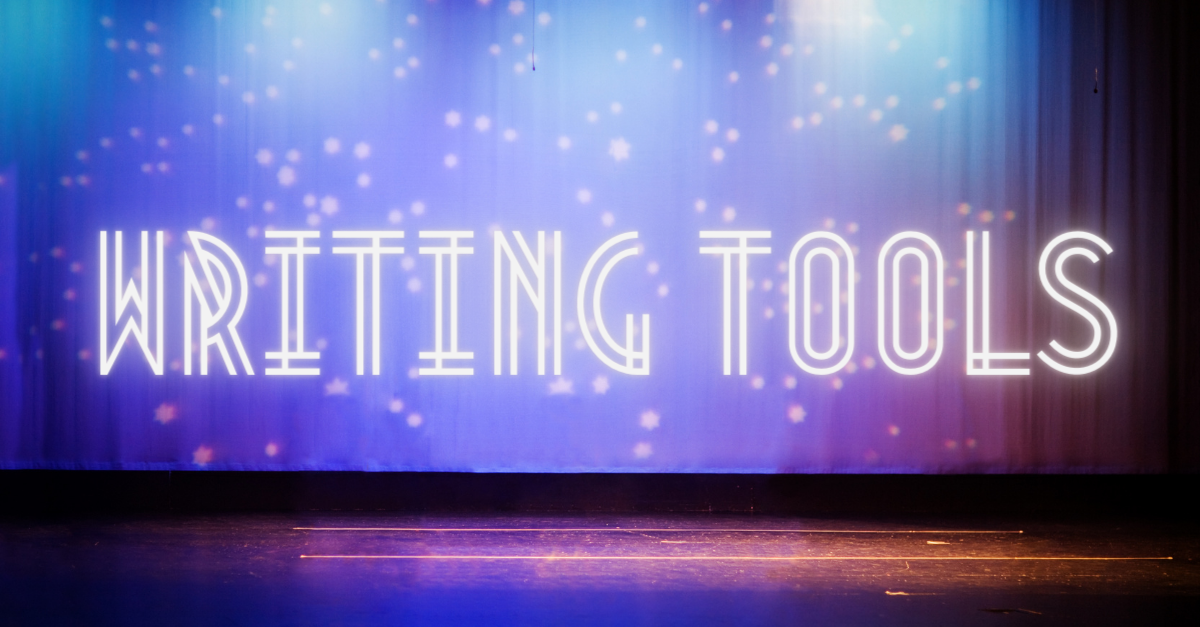
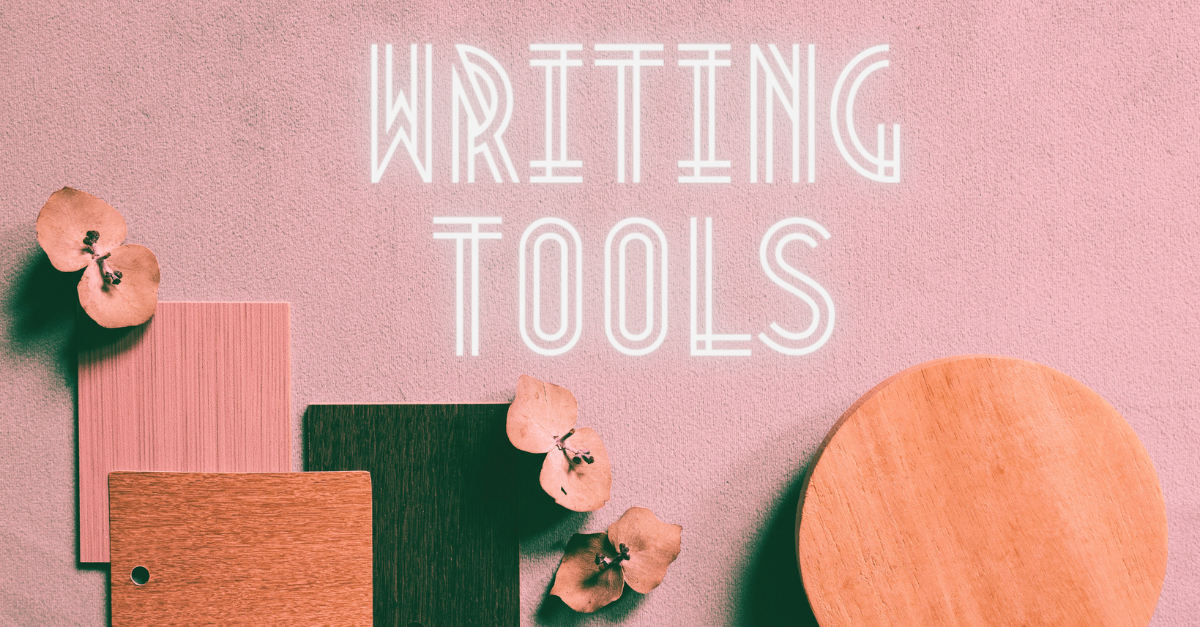

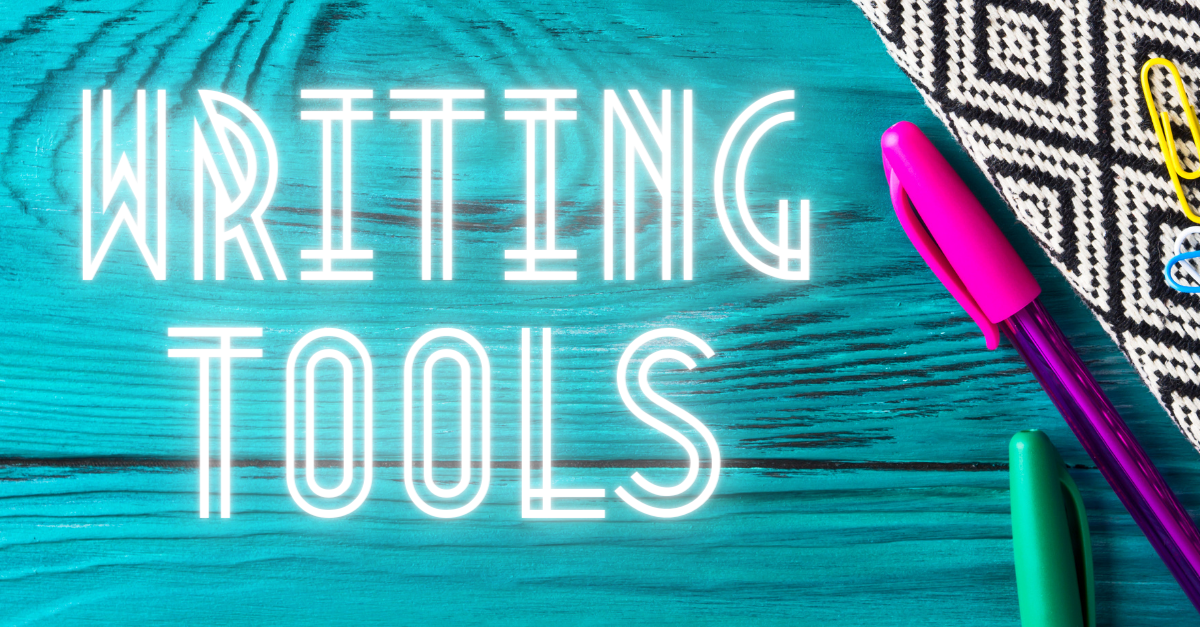
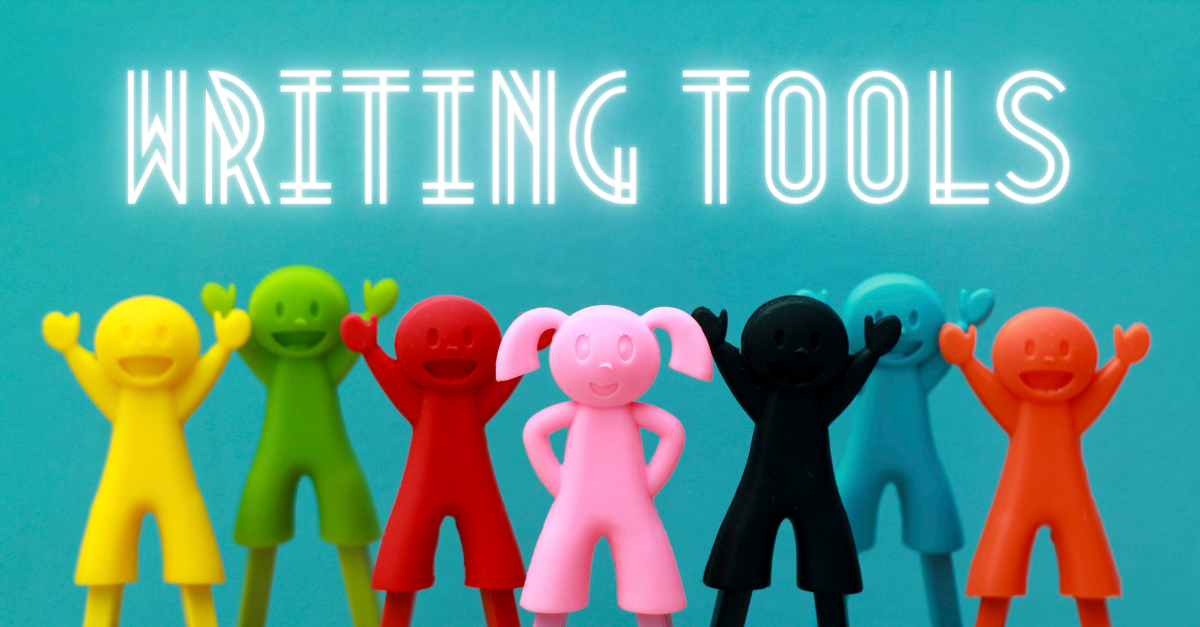
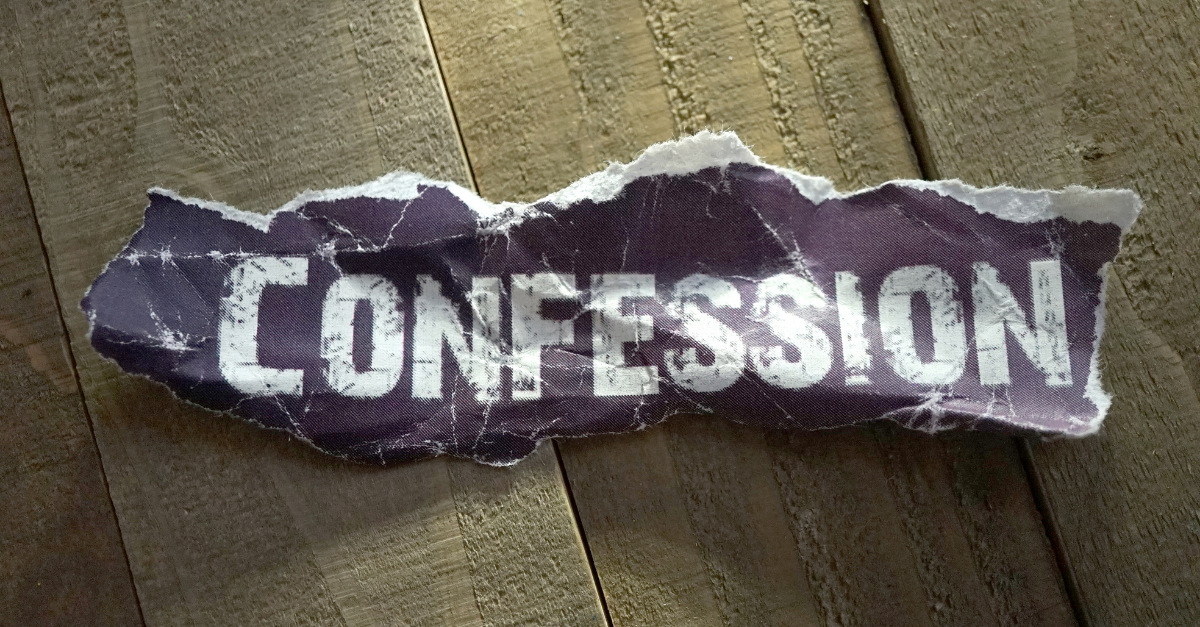

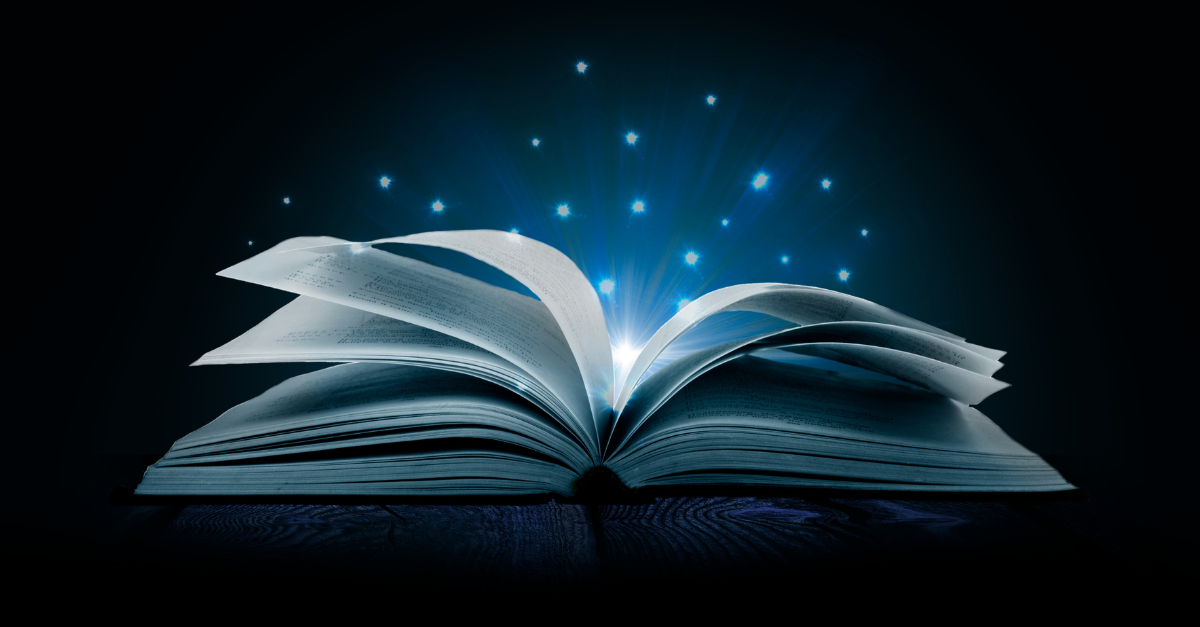


 RSS Feed
RSS Feed
